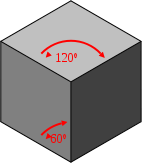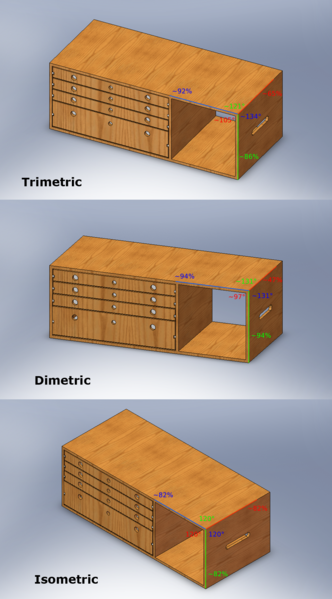Dana Vrajitoru
B583/C490 Game Programming and Design
2.5 Games
2.5 Games
- Def. Also called pseudo-3D, they are games that appear to
be 3 dimensional, but without having 3D freedom of movement.
- Usually the world is 2D but the game tokens are drawn in the 3rd
dimension.
- The rendering uses a fixes projection, usually parallel.
Age of Empires example
Examples
- Age of Empires
- Sim City
- Arcanum
- Diablo 1 and 2
- Roller Coaster Tycoon 1 and 2
- Mega Man Battle Network
- Super Mario RPG
- Starcraft
Technical Details
- Many of these games render objects with a bitmap/texture applied
to a simple polygon.
- Since the image used is display in a plane perpendicular to the
view direction, it is called billboarding.
- If your projection never changes through the game, you can work
directly with the projected coordinates.
Simplest Projection
- The scene is in 2D (x and y), but each object has a z (depth)
property attached to it.
- To solve the issue of overlapping objects, they are drawn in
reverse order of their z coordinate.
Axonometric Projection
- Axonometric projection - popular in architecture. It means that
the 3 axes are equally distorted. Related: dimetric (2 axes are
equally distorted), trimetric.
- All the lines parallel to the x and z axes are parallel and kept
in proportion.
- Start with a 2D plan of the area. Draw each object up at a fixed
angle (45o).
- It usually consists of a rotation around y followed by a rotation
around x. It can be accompanied by a scaling over z to simulate
perspective.
- It can be rendered using simple formulas.

Isometric projection and angles.

Axonometric projections and used angles.
Example
- Let P(x, 0, z) be the object to draw. Then the projection on the
screen will be defined by
- xd = x cos a + z sin a
- zd = -x sin a + z cos a
- yd = c zd
- Sort the objects by zd and draw them in reverse order
at position (xd, yd) on the screen.


